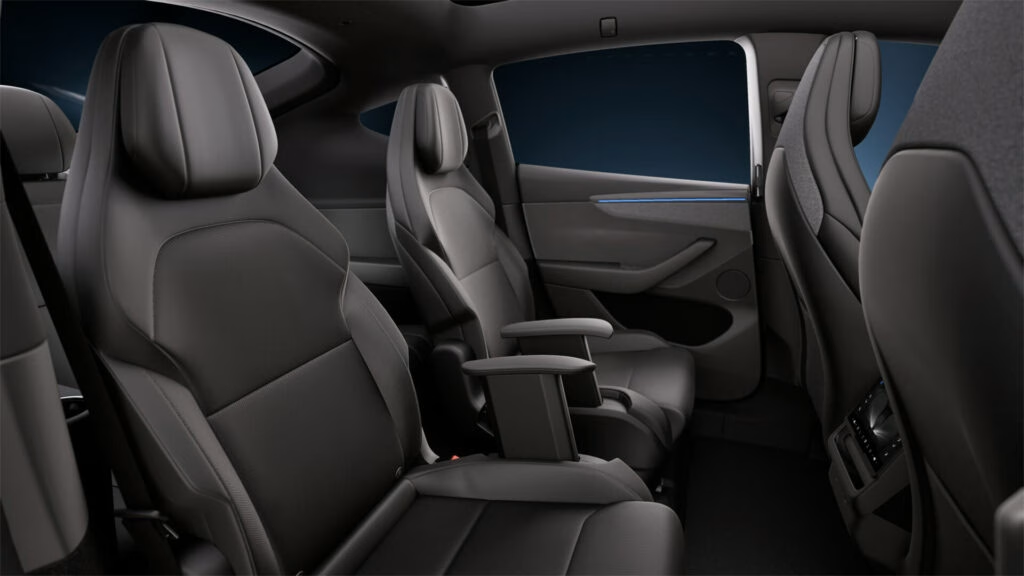What’s the Story Behind the Tesla Model YL and Why Are People Talking About It?
Tesla’s Model Y has been a runaway hit, topping sales charts not just for electric vehicles but across all car types globally. So, when Tesla quietly launched a stretched, six-seat version called the Model YL in China, American fans immediately started asking: When’s it coming here? The answer, according to Elon Musk, is complicated—and it says a lot about where Tesla thinks the future of driving is headed.
Is the Model YL Actually Coming to the US, or Is It Just Hype?
Here’s the scoop: Elon Musk recently confirmed that US production of the Model YL could begin as soon as late 2026, maybe slipping into early 2027. But—and it’s a big but—he also hinted it might not happen at all if Tesla’s self-driving tech takes off the way he hopes. Musk has a history of making bold promises about autonomy, and this time he’s suggesting that if fully autonomous vehicles (think: true Level 5, no steering wheel needed) become reality, the need for a larger, family-focused SUV like the Model YL might just vanish.
That’s a bold claim. As of mid-2024, Tesla’s Robotaxi program is making headlines, with pilot services running in select cities. But every single Robotaxi still has a human safety officer on board, and the system is far from the sci-fi dream of cars that drive themselves anywhere, anytime. According to a 2023 report from the National Highway Traffic Safety Administration, no company—not even Tesla—has achieved full Level 5 autonomy. So, for now, the Model YL’s US debut is still very much on the table.
What Makes the Model YL Different From the Standard Model Y?
Let’s get into the details that have families buzzing. The Model YL isn’t just a stretched Model Y—it’s a true three-row SUV, offering six seats with two captain’s chairs in the middle row. That’s a big deal for anyone who’s ever tried to squeeze three car seats into a regular back seat or juggled soccer gear and groceries on a weekend. The extra length means more cargo space, more legroom, and a more comfortable ride for everyone.
This configuration puts the Model YL in direct competition with other three-row electric SUVs like the Rivian R1S and the Kia EV9, both of which have seen strong demand in the US market. According to Kelley Blue Book, three-row SUVs are one of the fastest-growing segments among EV buyers, especially for families making the switch from gas to electric.
Why Does Elon Musk Think Autonomy Could Make the Model YL Obsolete?
Here’s where things get interesting. Musk’s argument is that if self-driving Robotaxis become the norm, the whole idea of owning a big family SUV might fade away. Instead, you’d just summon a vehicle when you need it—maybe a minivan for a birthday party run, a sedan for your commute, or a delivery van for your latest online shopping spree. No need to pay for a giant car that sits idle most of the time.
But there’s a catch: even if Robotaxis become widespread, plenty of families still want the flexibility, privacy, and control that comes with owning their own vehicle—especially one that can haul kids, pets, and gear at a moment’s notice. In fact, a recent survey by J.D. Power found that 68% of American parents with three or more children say they’d prefer to own a three-row SUV, even if fully autonomous ride-hailing was available. Old habits die hard.
How Are Larger Families Supposed to Get Around If Robotaxis Take Over?
This is the million-dollar question that Musk hasn’t really answered. Sure, Robotaxis might be great for quick trips or solo commutes, but what about road trips, vacations, or the daily chaos of shuttling multiple kids to different activities? For many families, the idea of relying entirely on shared vehicles—especially for longer journeys or in less densely populated areas—just doesn’t add up.
There’s also the matter of accessibility. Not every city or suburb is going to have a fleet of Robotaxis ready to go, and rural areas could be left out entirely. Until self-driving tech is truly everywhere (and that could be a decade or more away), the demand for practical, spacious vehicles like the Model YL isn’t going anywhere.
When Can Buyers Realistically Expect the Model YL in the US?
If you’re hoping to see the Model YL at your local Tesla showroom, patience is key. Based on Musk’s latest comments, production in the US is unlikely to start before late 2026. And that’s if everything goes smoothly—no delays, no sudden pivots to autonomy-first strategies. Given Tesla’s track record of shifting timelines, it wouldn’t be surprising if the launch slips into 2027.
That said, the Model YL’s arrival could shake up the three-row EV market in a big way. With Tesla’s brand loyalty and the Model Y’s proven popularity, a larger, more versatile version could be exactly what growing families have been waiting for.
What’s the Real Takeaway for Families and EV Fans?
Here’s the bottom line: Tesla’s Model YL is shaping up to be a game-changer for families who want more space without giving up the benefits of an electric vehicle. But its future in the US is tangled up with the unpredictable pace of self-driving technology. If you’re holding out for a six-seat Tesla, keep your eyes on the news—and maybe start planning for a late-2026 or 2027 delivery.
The big takeaway? Choosing your next family car isn’t about chasing perfection—it’s about making smarter, future-ready choices. Start by weighing what matters most to your crew, and you’ll be ahead of the curve when the next wave of EVs hits the road.

